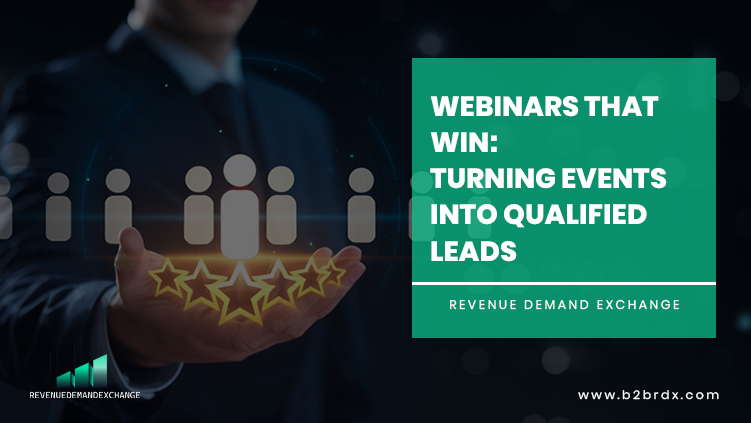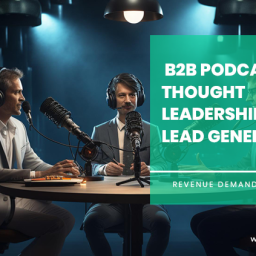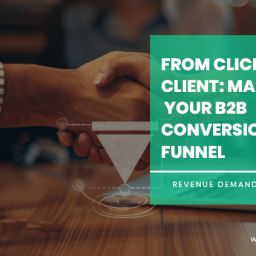Webinars that Win: Turning Events into Qualified Leads

Webinars are now one of the best ways for B2B businesses to connect with their audience, show that they are experts in their field, and improve their sales pipeline. When done right, webinars can do more than just offer information; they can also turn people who attend into highly qualified leads. The hard part is making webinars that not only get people to sign up but also turn them into leads that sales teams can follow up on.
In this post, we’ll talk about how to make and host webinars that really work by creating demand, giving value, and getting people closer to becoming customers.
Knowing how webinars can help you get leads
Webinars bridge the gap between marketing and sales by offering an interactive platform to engage prospects. Unlike blogs or whitepapers, they provide a two-way communication channel where businesses can educate, demonstrate, and connect with potential leads in real-time. This makes them an excellent medium to identify prospects who show genuine interest in your solutions.
By gathering registration data, monitoring engagement during the session, and analyzing post-event activity, businesses can extract highly qualified leads that align with their target audience.
Pick Topics That Matter to Your Audience
The first step to a successful webinar is aligning your content with your audience’s pain points and aspirations. A generic topic may attract registrations, but it won’t engage serious buyers. Instead, focus on addressing specific challenges your prospects face and provide actionable strategies they can implement.
For example, if you target B2B SaaS companies, hosting a webinar on “Reducing Churn with Customer Success Strategies” will resonate far more strongly than a broad discussion on “Improving Software Efficiency.” When the content hits the right nerve, attendees are more likely to stay engaged and consider your business as a solution provider.
Make invitations and landing pages that are hard to resist
Even the most valuable webinar won’t succeed without high-quality promotion. Start with a strong landing page that clearly communicates the value attendees will gain. Use persuasive copy, benefit-driven headings, and social proof such as testimonials from past attendees or statistics from prior webinars.
Channels to promote your webinars include:
- Email campaigns targeting segmented lists
- Paid campaigns on LinkedIn or Google Ads
- Organic promotion via social media posts
- Partnerships with industry influencers and communities
Creating urgency with limited-event reminders and offering incentives, such as exclusive templates or guides, can also boost registrations.
Give sessions that are interesting and interactive
The live experience makes webinars unique. Attendees expect interaction rather than a one-sided lecture. To keep the audience engaged, presenters should include elements like live polls, Q&A sessions, case studies, and even breakout discussions if applicable.
Visual content plays a key role too, so avoid text-heavy slides and instead use graphics, storytelling, and product demos to maintain interest. The more value participants feel they receive, the more likely they are to trust your brand and move closer to a sales conversation.
Use smart data collection to qualify leads
One of the biggest advantages of webinars is the data they generate. Beyond the registration form, marketers can capture insights based on attendee behavior such as:
- Length of attendance
- Interaction in polls and Q&A
- Click-throughs on shared resources
- Follow-up survey responses
By combining these data points with CRM and marketing automation tools, you can score attendees and identify who is truly sales-ready. This avoids wasting sales efforts on unqualified leads and ensures focus on high-potential prospects.
Use Webinars as Part of Your Sales Funnel
A single webinar should not stand alone. For maximum ROI, integrate webinars into your wider demand generation funnel. Before the event, nurture prospects with teaser content like blog posts or email sequences. After the event, follow up with personalized resources such as recording links, additional guides, or case studies.
Sales teams should take an active role in post-webinar outreach—referencing questions or poll responses from the session can make their communication more customized and persuasive. When webinars are seamlessly connected with the sales funnel, they accelerate prospects’ journey from awareness to consideration.
Use Webinar Content in Different Ways on Different Channels
The value of a webinar extends well beyond the live session. Smart marketers repurpose webinar content into multiple formats to maximize exposure and lead opportunities. For instance, you can:
- Create bite-sized video clips for LinkedIn
- Publish a blog summarizing the key insights
- Develop an eBook or whitepaper from the script
- Turn poll results into a visually appealing infographic
This not only expands reach but also nurtures attendees who may need more touchpoints before moving forward.
Check performance and make it better
To continuously generate qualified leads from webinars, businesses must measure the right metrics and optimize over time. Key metrics to assess include:
- Registration-to-attendance ratio
- Attendee engagement rate
- Lead-to-opportunity conversion
- Influence on pipeline and revenue
By analyzing what works and where drop-offs occur, marketers can refine future webinars to attract more qualified leads. Experimenting with formats like panel discussions, case study deep dives, or product walkthroughs can reveal new engagement opportunities.
In conclusion
Webinars remain one of the most effective B2B marketing tools for converting interested prospects into qualified leads. The key to success lies in delivering value-driven content, engaging participants actively, leveraging data to qualify interest, and aligning webinars with your broader sales and marketing funnel.
When approached strategically, webinars transform from simple online events into powerful demand-generation engines that consistently fuel your sales pipeline. Businesses that master this approach not only gain leads but also build trust, authority, and long-term customer relationships.





